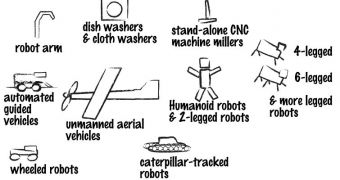One of the main goals in the field of robotics has been to endow machines with the ability to understand and make sense of the environment they are navigating. This has thus far been achieved by using video cameras and shape- and pattern-recognition software. However, the capabilities that this approach has are severely limited, as they do not allow for the robot's “brain” to become an active part in the process. But now, European researchers have just begun a new research initiative that could see our mechanical friends receiving a more human-like and efficient type of vision, AlphaGalileo reports.
The research, dubbed the TACO project, began only two months ago, in February 2010, and its main goal is to provide manufacturers with new technologies and innovation. The ultimate purpose of this is to create robots that can be used in a wider array of tasks, ranging, for example, from working in construction to performing driving-assist maneuvers. Possible applications also include various fields of healthcare, and even surgery, as well as entertainment, security, maintenance, cleaning, and so on. This will allow the machines to enter markets that are currently dominated by humans, such as that of personal assistants.
One of the main pillars of the TACO approach is a process called 3D foveation. The system is fairly straightforward, the researchers behind it say. It acquires coarse 3D images of what is in the robot's field of view, and then applies fast-working image-recognition technique to this preliminary image. As this is done, specialized software identifies areas of interest in the image, and then focuses the full force of the robot's observational capabilities on those targets. The rest of the image, which is deemed to contain information unworthy of further analysis, is then ignored.
“Through the foveation process, the sensor will provide 10 times better resolution than existing sensors with hardware enabling a 10 times size resolution. One of the most important project deliveries will be an easily accessible report comparing the TACO sensor to existing 3D sensor, making the TACO advantage clear to the European robotics community,” says the lead technician on the project, Jens T Thielemann. He adds that the innovation will allow robots to see just like humans do – placing their focus on a segment of the overall image, and then ignoring the rest.

 14 DAY TRIAL //
14 DAY TRIAL //